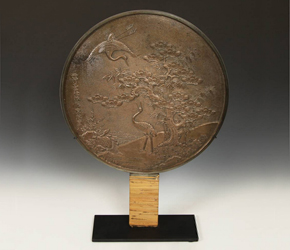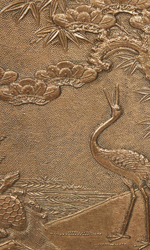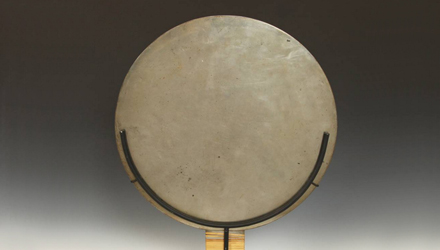| |
 |
| |
Japanese kagami or hand mirror |
Look closely into your eyes. It can’t be done without some sort of mirror. Go back eons and you could see yourself in a pool of still water. Travel to Turkey 8,000 years ago and polished obsidian did the trick. A mere four thousand years ago, Egyptians made copper the reflective surface of choice; but it wasn’t until 1835 that the modern mirror was invented by German chemist Justus Von Liebig, who figured out how to fix metallic silver on glass. Yet, did his invention really allow us to see ourselves more clearly?
 |
|
| This kagami depicts both cranes and a tortoise, symbols of long life and good fortune |
|
This week’s New Arrival features a bronze mirror from Japan. In ancient Japan mirrors were considered rare, mysterious objects; the ultimate source of honesty because they reflect all that is good and bad, right and wrong. Look at the back of this mirror and you will see a tortoise and two cranes, all symbols of long life and good fortune; but that’s only the back. The front tells a different story. It says, to receive the blessings on the back it’s better to be honest about what can actually be observed rather than what is reflected alone.
View Product ››


